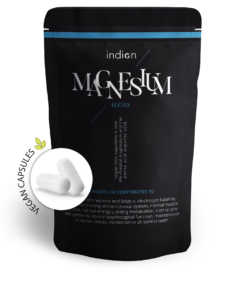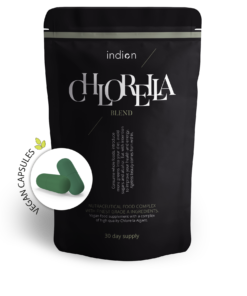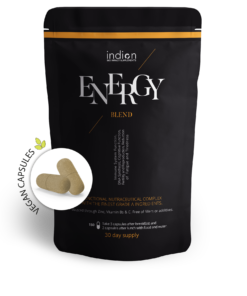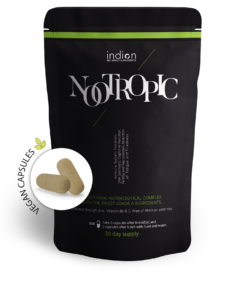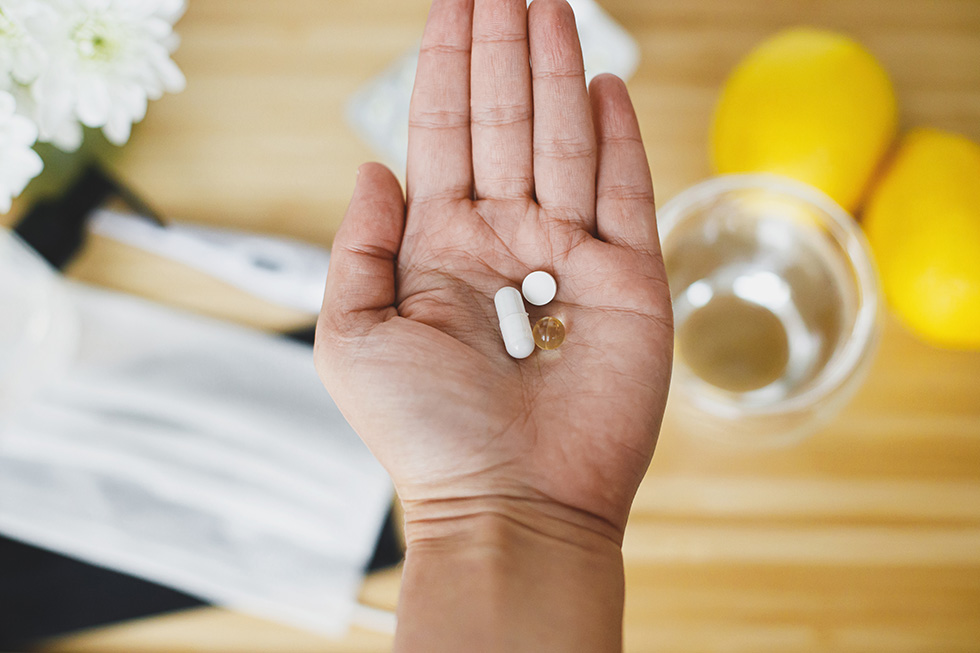Everything you need to know about Beta-Ecdysterone: Effects, benefits, interactions, legality
Beta-Ecdysterone
Beta-ecdysterone is a natural substance found in various plants. Plants use the active ingredient to repel insects and microorganisms. The most concentrated sources are the rhizomes of the plant Polygonum multiflorum and the roots of the plant Leuzea carthamoides. Beta-ecdysterone has been shown to have a variety of effects on the organism, many of which are still being researched. It is an extremely potent substance found in foods such as spinach or mushrooms; it helps build muscle and because of its potency is watched by the World Anti-Doping Agency but is not on any banned lists.
In this article, we will take a closer look at the facts, the amounts dosages and hormone interactions of this fascinating supplement. What is Beta-Ecdysterone i, how does it work and what are its possible benefits and side effects.
How does ecdysterone work?
For many years, research groups have been studying the effects of plant steroids on protein biosynthesis. While it was clear that these substances had a stimulatory effect, the mechanism was not well understood. Recently, however, scientists have made significant progress in uncovering the details of how ecdysteroids work. It is now known that they affect not only ribosomes but also the nucleus and mitochondria. In addition, it has been shown that the compound can stimulate protein synthesis in both nerve tissue and the liver. This discovery offers new insights into the potential therapeutic benefits of a variety of diseases.
Why is ecdysterone so enormously important?
It enhances performance:
When it comes to boosting athletic performance, no other legal supplement can match the effectiveness of Beta Ecdysterone. This naturally occurring plant steroid has proven to be the most effective in all test scenarios. It provides a reliable boost in energy and endurance while helping to increase muscle mass and reduce body fat. And unlike many other performance enhancers, this ingredient is completely legal, making it the star among supplements.
Since beta-ecdysterone was first discovered in Russia in the 1980s, it has become a top choice for athletes looking to maximize their performance. Thanks to improved extraction methods over time, this coveted substance is now available to everyone, making it the undisputed champion in the world of supplements. With its proven ability to improve all aspects of athletic performance, this ingredient is sure to remain at the top for many years to come.
Immune System:
Many recent studies have looked at the impact of phytosteroids on the immune system, focusing on their effect on inflammatory processes. In animal studies, beta-ecdysterone at a dose of 10-20 mg/kg body weight per day was shown to have an anti-inflammatory effect equivalent to that of cortisone acetate. The therapeutic dose of cortisone acetate is 1 mg/kg body weight. Another group of researchers found that ecdysteroids can also reduce histamine release from rat peritoneal mast cells, once again demonstrating the anti-inflammatory potential of these compounds. These results suggest that ecdysterone may be a valuable tool in the treatment of inflammation in humans. Further studies are needed to confirm these effects in humans, but the initial results are promising.
Nervous system improvement:
Some scientists have shown that ecdysterone can improve the nervous system. One study showed that the drug increased the number of motor neurons in the lumbar region of the spinal cord of rats. This suggests that the contained substance could be useful in treating diseases such as amyotrophic lateral sclerosis (ALS) or spinal cord injuries. Another study found that myelinogenesis, the process of forming myelin sheaths around nerve cells, was improved. This suggests that it might also help in the treatment of demyelinating diseases such as multiple sclerosis.
While these studies are promising, more research is needed to confirm the effects on the nervous system in humans.
Beta-ecdysterone may increase endogenous GABA biosynthesis and acetylcholinesterase. Recently, it has been shown to appear to contain neuroprotective substrates that reduce glutamate-induced neuronal death.
Improvement of liver function:
Beta-ecdysterone and also turkesterone improve liver recovery after hepatitis induced by heliotropin treatment and/or subcutaneous injection of carbon tetrachloride.
Phytosterols are referred to by several insiders as “universal health substrates” because they have not only antioxidant and anti-inflammatory properties but also positive physiological functions such as kidney function, heart function, and lung function. Improved cardiovascular system function, faster wound healing, fracture repair, and antibiotic effects are also reported.
Antioxidant properties and vitamin D metabolism:
Ecdysteroids are a class of natural compounds that have been shown to have vitamin D-like properties. In particular, they have been shown to reduce free radicals, improve calcium absorption, and promote bone growth. Although more research is needed to confirm these effects in humans, these compounds appear to offer a promising new approach to vitamin D supplementation. In addition, ecdysteroids may have other benefits, such as promoting muscle growth and increasing fat burning. Therefore, further research and studies are warranted to explore all potential uses of this class of compounds.
Improved carbohydrate metabolism:
In 1992, Takahashi and Nishimoto conducted a study on the effects on blood glucose levels in diabetic mice. They found that ecdysteroids were able to lower blood glucose levels compared to normoglycemic mice. In addition, they found that glycogen metabolism was increased. Consequently, the substance could be used as an antidiabetic agent.
Similarly, a human study conducted by Naumann et al. found that insulin sensitivity was increased, and fasting blood glucose levels were lowered. So these studies suggest that ecdysteroids may be a promising treatment for diabetes.
What is beta-ecdysterone?
Beta-ecdysterone, also known as 20-hydroxyecdysone, is a highly potent natural phytochemical found in many medicinal herbs, such as Cyanotis vaga. This compound is standardized to a purity level of 97%, making it an extremely powerful and effective supplement with numerous health benefits. Due to its unique chemical structure, ecdysterone has a wide range of effects on the human body, ranging from muscle mass and strength to brain function and metabolism. For athletes and others looking to optimize physical performance or enhance overall health and well-being, this versatile phytochemical is an excellent choice. Thanks to recent breakthroughs in extraction techniques, it is now easier than ever to incorporate ecdysterone into your diet and reap its many benefits.
While there is a wealth of research on the potential effects of ecdysteroids on human health, there is also still much we don’t know about these powerful compounds. For example, while it is known that ecdysterone, found in many plants, has even greater anabolic potency than synthetic mesoboline, many compounds are ineffective when consumed by mammals or humans because they are not bioavailable in these species. In addition, recent research indicates that of the various types of ecdysteroids, only ecdysterone and turkesterone are of particular interest to athletes. In animal studies with rats, turkesterone was even more anabolic than ecdysterone. So although we still have much to learn about the benefits and effects of ecdysteroids in humans, it seems clear that they have great potential to enhance athletic performance and promote overall health.
How often and at what dosage should I take ecdysterone?
According to Japanese and Russian studies, a minimum daily dose of five milligrams per kilo of body weight is required to achieve a detectable effect. For general use, a daily dose of 400-600 mg per day is recommended. There are reports of athletes and bodybuilders achieving amazing results through supplements with a daily dose of up to 1200 mg. It seems advisable to divide the daily dose into three intakes (e.g. with meals) to ensure optimal absorption. Ecdysterone can be taken in cycles or phases: e.g. four to six weeks of intake followed by a two-week break. This gives the body enough time to assimilate the ecdysterone and avoid the possible negative effects of prolonged intake.
Can I get enough ecdysterone from food?
Spinach is a versatile vegetable that is rich in many important vitamins and nutrients. While the exact amount of ecdysterone contained in different varieties can vary widely, it is generally agreed that the highest concentration of this compound is typically in the range of 1-5 mg per 100 g of spinach. To replace a typical capsule of 480 mg of beta-ecdysterone with spinach, you would need to eat an enormous amount of this leafy green, up to 10 kilos or more depending on the variety and growing conditions. While spinach certainly has many benefits for our health and well-being, replacing a dietary supplement with this superfood is not a practical or realistic option for most people. However, it is important that we consume our daily portion of nutrient-dense foods like spinach to support our overall health and happiness, whether we use supplements or not.
What foods contain ecdysterone?
According to one study, the phytosteroid, found in both plants and microorganisms, is thought to improve athletic performance and have an anabolic effect.
One of the main sources of ecdysterone is spinach. Spinach is one of the healthiest foods.
Those who regularly consume the green leafy vegetable provide themselves not only with iron, but also with many valuable minerals, vitamins, and a large portion of protein.
It has been found that the performance-enhancing effect of spinach is mainly due to ecdysterone, but there are also many other plant foods that contain this compound. These include asparagus, sweet potatoes, quinoa, and white mushrooms. In addition to ecdysterone, these foods provide a number of other important nutrients such as iron, minerals, vitamins, and protein. Regular consumption of these foods can therefore have a significant impact on overall health and well-being.
Are there any known side effects caused by taking it?
Although ecdysterone has the potential to promote muscle development and growth when used in conjunction with exercise, there is no evidence of harmful side effects to date. In the above study, regular blood and urine samples were collected. Biomarkers for liver and kidney damage were monitored, and hormonal changes were examined. No harmful changes were detected in the process.
Side effects of taking ecdysterone were not observed in a study conducted by the Free University of Berlin. However, in the event of an overdose, temporary stomach discomfort and digestive problems may occur.
To avoid a debate about the risks, it should also be mentioned that these compounds are found in many plants and that eating 300 grams of spinach, for example, is equivalent to taking more than 30 mg of beta-ecdysterone normally recommended in sports. Perhaps the adventures of Popeye in the American cartoons are not as far-fetched as we once believed; however, they can all be traced back to spinach as a source of strength.
Is ecdysterone dangerous?
No, ecdysterone is not dangerous. So far, there have been no reports of negative reactions associated with taking these ingredients. However, as with any dietary supplement, it is always advisable to consult a physician before starting a new regimen.
Phytosterols (such as ecdysterone) have not been included in the doping list of the International Olympic Committee and the Anti-Doping Agency Wada. They are absorbed by humans in relevant quantities through food, and in the literature, there are numerous indications of various positive functional effects of these hormones on the human organism, and harmful side effects – unlike true steroids, are not expected.
Forms of ecdysterone:
These plant steroids are a class of natural agents that have attracted considerable scientific interest due to their unique mode of action. To date, approximately 200 different subtypes of ecdysteroids have been identified and studied in terms of their formation, action and extraction. However, it has been found that only a very small percentage of these subtypes are actually useful for performance enhancement. This is because the human body cannot metabolize most of these substances, as it does not produce them itself. Consequently, only a tiny fraction of all known phytosteroids are actually beneficial to humans. Nevertheless, the application potential of these substances is enormous and is being further explored by scientists around the world.
Species bioavailable to humans:
- 20-hydroxyecdysones
- 24 (28) A-dehydramacisterones
- Cyasterones
- Ecdysone
- Ecdysterone and Beta Ecdysterone
- Integristerone A
- Ponasterone A
- Sileneosides A and C
- Turkesterone
- Viticoesterones E
Studies:
A recent study investigated the effects of ecdysterone on muscle especially muscle strength and muscle growth in a group of 46 men who had previous experience with strength training. The results of the study indicated that the subjects taking ecdysterone had greater gains in muscle mass and muscle strength compared to the placebo group.
For the study, participants were divided into four groups. The first group received a daily dose of 12 mg of ecdysterone from spinate extract, while the other three groups received placebos. Over the course of 10 weeks, researchers tracked changes in each participant’s muscle mass and strength, as well as other important measurements such as body composition and resting metabolic rate.
The results of the study showed that at the end of the 10-week period, participants who had taken ecdysterone had significantly greater improvements in their muscle development and muscle strength compared to participants in all other groups. This suggests that ecdysterone may be an effective supplement for increasing muscle growth and performance in individuals with an established fitness routine. Thus, taking ecdysterone could be an extremely effective strategy for anyone looking to build lean muscle mass or achieve better results in their workout routine.
Nevertheless, it is still unclear exactly how ecdysterone works in the human body. We don’t have specific receptors for ecdysterone yet, so we don’t know how it works at the moment. Currently, it is believed that the anabolic effect is due to contact with estrogen receptor-β.
Conclusion:
Beta-ecdysterone is a powerful, naturally occurring compound that has been shown to have multiple benefits for human health. Paired with nutrition, it stimulates protein synthesis and helps the body build new muscle tissue. This can lead to more strength gains, size, increased conduction, and endurance. Many sports can benefit from this natural anabolic steroid. In addition, beta-ecdysterone has been shown to improve cognitive function, aid in fat and weight loss, and boost the immune system. The recommended amounts dosage depends on your goals, but in general, it is safe to take up to 100 mg per day. As with all supplements, it is important to consult a doctor before taking Beta-Ecdyster if you are pregnant or breastfeeding, or have other medical problems.
Referenzen:
Kurmukov AG, Syrov VN. 1988. Anti-inflammatory properties of ecdysterone. Medicinal’nii Zhurnal Uzbekistana (10) 68-70.
Kutepova TA, Syrov VN, Khushbaktova ZA, Saatov Z. 2001 Hypoglycemic activity of the total extract from Ajuga turkestanica. Pharmaceutical Chemistry Journal 35: 608-609.
Brann DW, Hendry LB, Mahesh VB. 1995. Emerging diversities in the mechanism of action of steroid hormones. Journal of Steroid Biochemistry and Molecular Biology 52: 113-133.
Brazil DP, Hemmings BA. 2001. Ten years of protein kinase B signalling: a hard Akt to follow. Trends in Biochemical Sciences 26: 657-664.
Burdette WJ. 1962. Effect of invertebrate hormones on vertebrate tissues. Science 139: 987.
Burdette WJ. 1972. Hormonal heterophylly, invertebrate endocrinology, and phyto-hormones. Cancer Research 32: 1088-1090.
Lafont R. 1998. Phytoecdysteroids in the World flora : diversity, distribution, biosynthesis and evolution. Russian Journal of Plant Physiology 45:276-295.
Lafont R, Girault JP, Kerb U. 1988. Excretion and metabolism of injected ecdysone in the white mouse. Biochemical Pharmacology 37:1174-1177.
Lüers GH, Jess N, Franz T. 2000. Reporter-linked monitoring of transgene expression in living cells using the ecdysone inducible promoter system. European Journal of Cell Biology 79:653-657.
Yao TP, Forman BM, Jiang Z, Cherbas L, Chen JD, McKeown M, Cherbas P, Evans RM. 1993. Functional ecdysone receptor is the product of EcR and Ultraspiracle genes. Nature 366: 476-479.
Wu X, Jiang Y, Fan S. 1997. Effect of ecdysterone on lung contusion from impact. Chinese Journal of Traumatology 13:295-296.
Wu X, Jiang Y, Fan S, Wang R, Xiang M, Niu H, Li T. 1998a. Effects of ecdysterone on rat lung reperfusion injury. Zhongguo Yaolixue Tongbao (Chinese Pharmaceutical Bulletin) 14: 256-258.
Uchiyama M, Otaka T. 1974. Phytoecdysones and protein metabolism in Mammalia. In Burdette WJ, editor. Invertebrate Endocrinology and Hormonal Heterophylly, 375-398, Springer-Verlag, Berlin.
Uchiyama M, Yoshida T. 1974. Effect of ecdysterone on carbohydrate and lipid metabolism. In Burdette WJ, editor. Invertebrate Endocrinology and Hormonal Heterophylly, 401-416, Springer-Verlag, Berlin.
Simon P, Koolman J. 1989. Ecdysteroids in vertebrates : pharmalogical aspects. In Koolman J., editor. Ecdysone from chemistry to mode of action, 254-259, Georg Thieme Verlag, Stuttgart.
Referenzen: Chermnykh, N.S., et.al. (1988). The action of methandrostenolone and ecdysterone on the physical endurance of animals and on protein metabolism in the skeletal muscles. Farmakol. Tok. (USSR). 51, 57-60
Simakin, S. Yu., et al., (1988). The Combined Use of Ecdisten and the Product ‘Bodrost’ druing Training in Cyclical Types of Sport. Scientific Sports Bulletin, No. 2
Gizatullina ZZ, Gagelgans AI, Syrov VN. 1994. Effects of ecdysterone, turkesterone and nerobol on thymocyte energy metabolism. Doklady Akademii Nauk Uzbeckoy SSR (10) 49-52.
Grebenok RJ, Ripa PV, Adler JH. 1991. Occurrence and levels of ecdysteroids in spinach. Lipids 26 : 666-668.
Abubakirov NK, Sultanov MB, Syrov VN, Kurmukov AG, BaltaevU, Novosel’skaya IL, Mamatkhanov AV, Gorovits MB,Shakirov TT, Shamsutdinov I, Yakubova MR, Genkinoy GL.1988. Tonic preparation containing the phytoecdysteroid (ecdystene). Application SU 1312774 (Chemical Abstracts 110: 121377).
Lupien PJ, Hinse C, Chaudhary KD. 1969. Ecdysone as a hypocholesterolemic agent. Archives Internationales de Physiologie et de Biochimie 77:206-212.
Mykhaylyk OM, Kotsuruba AV, Buchanevich OM, Korduban AM, Mengel EF, Gulaya NM. 2001. Signal transduction of erythrocytes after specific binging of ecdysterone and cholesterol immobilized on nanodispersed magnetite. Journal of Magnetism and Magnetic Materials 225:226-234.
Selepcova L, Magic D, Vajda V. 1993b. Use of Rhaponticum carthamoides Wild. in animals nutrition. Cultivation, Harvesting and Processing of Herbs, Meeting held in The High Tatras, Slovak Republic, June 15-17. Book of Abstracts , p. 76.
Yang G, Hannan GN, Lockett TJ, Hill RJ. 1995. Functional transfer of an elementary ecdysone gene regulatory system to mammalian cells: transient transfections and stable cell lines. European Journal of Entomology 92: 379-389.
Nutritional supplements
€39,90
Nutritional supplements
€39,90
Nutritional supplements
€39,90
Nutritional supplements
€59,90
